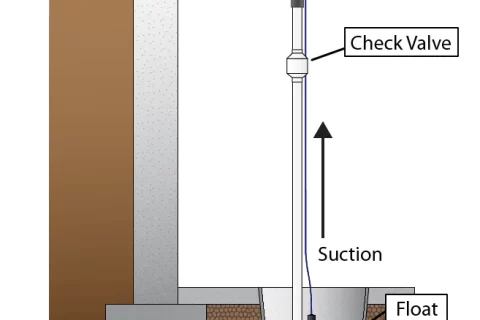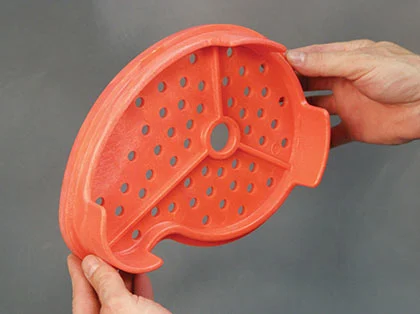For many homeowners, a basement can be a versatile space used for storage, recreation, or even an additional living area. However, basements are also susceptible to water infiltration, which can lead to mold growth, structural damage, and the loss of valuable possessions. This is where a sump pump comes to the rescue. In this blog post, we’ll take a closer look at how a sump pump works in a basement, its essential components, and why it’s a vital tool for maintaining a dry and safe living space.
The Basics of Sump Pumps
A sump pump is a mechanical device designed to prevent water accumulation in basements and crawl spaces. It’s typically installed in a sump pit, a specially excavated area in the lowest part of the basement. When water collects in this pit due to rainwater, groundwater, or melting snow, the sump pump activates to pump the water out and away from the building’s foundation.
10 Bestselling Sump Pump for Basement
Components of a Sump Pump System
A sump pump system consists of several key components that work together to ensure effective water management:
1. Sump Pit:
This is a basin dug into the basement floor where water collects. It serves as a reservoir for water to accumulate, allowing the pump to remove it before it reaches a critical level.
2. Sump Pump:
The heart of the system, the sump pump itself, is typically an electrically powered device. There are two main types: submersible and pedestal. Submersible pumps are designed to be submerged in water within the sump pit, while pedestal pumps are positioned above the pit with a hose or pipe that extends into it.
3. Float Switch:
The float switch is an ingenious mechanism that triggers the sump pump to turn on when the water level in the sump pit reaches a certain height. As the water level rises, the float switch also rises, eventually activating the pump.
4. Check Valve:
A check valve is installed on the discharge pipe of the sump pump. It prevents water from flowing back into the sump pit after it has been pumped out. This helps to maintain the efficiency of the pump and prevents unnecessary cycling.
5. Discharge Pipe:
The discharge pipe is the conduit through which the water is pumped away from the basement. It usually extends outside the building, directing the water away from the foundation to prevent any potential flooding issues.
The Pumping Process
When rainwater or groundwater enters the sump pit and raises the water level, the float switch is lifted. This activates the sump pump, which starts pumping water out of the pit through the discharge pipe. As the water level decreases, the float switch lowers, eventually turning off the pump when the water has been sufficiently pumped out.
Benefits of a Sump Pump
1. Flood Prevention:
The primary purpose of a sump pump is to prevent flooding in the basement, which can lead to costly water damage and mold growth.
2. Foundation Protection:
By removing excess water from around the foundation, a sump pump helps to maintain the structural integrity of the building.
3. Mold and Mildew Prevention:
Keeping the basement dry reduces the likelihood of mold and mildew growth, creating a healthier living environment.
4. Property Preservation:
Valuable items stored in the basement are protected from water damage, ensuring their longevity.
Common FAQs About Basement Sump Pump
Q1: What is a sump pump, and why is it important in a basement?
A sump pump is a mechanical device designed to remove water that accumulates in a sump pit, typically found in basements or crawl spaces. It’s essential because it helps prevent flooding and water damage by pumping out excess water to keep these spaces dry and safe.
Q2: Are there any additional benefits to having a sump pump in the basement?
Aside from preventing flooding and water damage, having a sump pump can also help maintain the structural integrity of your home’s foundation by keeping excess water away. Additionally, a dry basement reduces the risk of mold and mildew growth, creating a healthier indoor environment. Finally, it protects valuable items stored in the basement from water-related damage.
Q3: Can a sump pump handle all types of basement water issues?
Sump pumps are effective at managing groundwater and minor seepage issues. However, they might not be suitable for addressing major water intrusion problems, such as a high water table or large-scale flooding. In such cases, it’s essential to consult with a professional to determine the best solution for your specific situation.
Q4: Are there any alternatives to sump pumps for basement water management?
Yes, there are alternatives such as interior and exterior drainage systems, waterproofing coatings, and French drains. The choice of solution depends on the severity of the water issue and the specific characteristics of your basement. Consulting with a waterproofing professional can help you determine the most appropriate approach for your situation.
Q5: How does a sump pump direct water away from the basement?
The water pumped out by the sump pump is directed away from the basement through a discharge pipe. This pipe extends from the pump to the exterior of the building, ideally a safe distance away from the foundation. This ensures that the pumped-out water doesn’t pool near the building, preventing any potential flooding issues.
Conclusion
In the battle against basement water infiltration, a sump pump emerges as a crucial ally. Through its clever design and efficient mechanism, it provides homeowners with peace of mind, safeguarding their living space and possessions from the potential hazards of water damage. Whether it’s the float switch, check valve, or discharge pipe, every component plays a vital role in ensuring that water is effectively managed and pumped away from the basement. So, the next time you descend into your basement, take a moment to appreciate the silent workhorse that is the sump pump, diligently keeping your space dry and comfortable.




